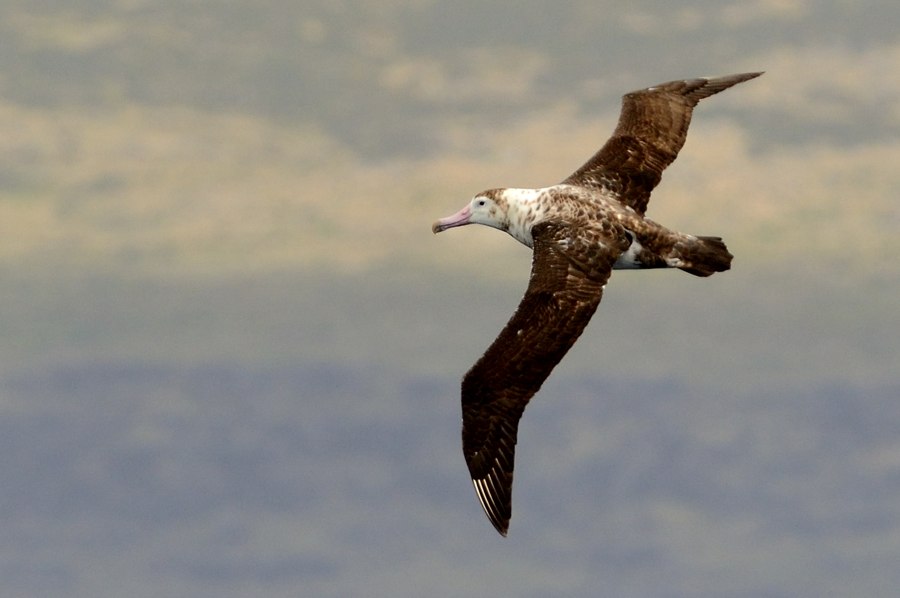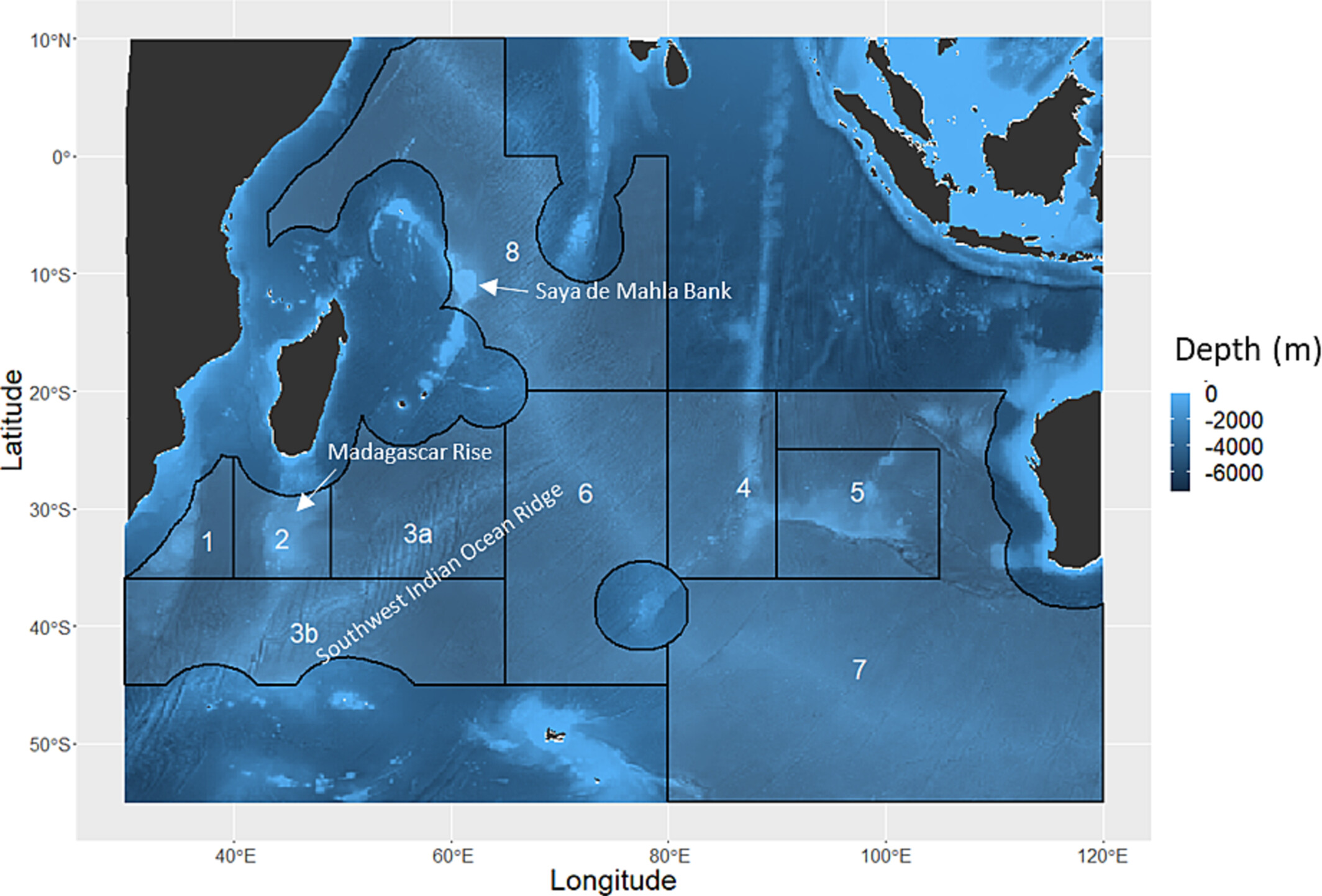 32 seabird species were identified as occurring in the Southern Indian Ocean Fisheries Agreement (SIOFA) management area, including the Endangered Amsterdam Albatross Diomedea amsterdamensis
32 seabird species were identified as occurring in the Southern Indian Ocean Fisheries Agreement (SIOFA) management area, including the Endangered Amsterdam Albatross Diomedea amsterdamensis
Keith Reid (Ross Analytics Pty Ltd, Tasmania, Australia) and colleagues have published open access in the journal Aquatic Conservation: Marine and Freshwater Ecosystems on fisheries management bodies integrating non-target species impact into their regulatory frameworks, focusing on the Southern Indian Ocean Fisheries Agreement (SIOFA).

Figure 1 from the paper: The Southern Indian Ocean Fisheries Agreement Area with subareas labelled numerically, important geographic features mentioned in the text are labelled.
The paper’s abstract follows:
- Fisheries bycatch has been identified as the most serious threat to many seabird species and there is an increasing awareness of the responsibility of fisheries management bodies to include the impact on non-target species in their management and regulatory frameworks.
- In 2022, an ecological risk assessment (ERA) for seabirds and fisheries was presented to the Scientific Committee of the Southern Indian Ocean Fisheries Agreement (SIOFA). This ERA identified 32 seabird species that regularly occurred in the SIOFA Area, of which 11 were determined as being at high risk. This high-risk group included 10 albatross species that have the greatest likelihood of interacting with SIOFA managed fisheries in Subareas 1, 2 and 3b (west of 40° E) where they overlap with the pelagic longline fishery.
- Although the pelagic longline fishery for Ruvettus pretiosus is the largest fishery under the auspices of SIOFA, in terms of catch and number of vessels, the existing management measures of SIOFA focused on demersal fisheries and did not include any mitigation requirements for pelagic longlines. In response to the outcomes of the ERA, a proposed amendment to SIOFA's management measures was presented by France to the Meeting of Parties of SIOFA and led to the revision of SIOFA's seabird bycatch mitigation measures in respect of pelagic longlines, making them consistent with those agreed by the Indian Ocean Tuna Commission.
- Regulatory diffusion, the increased likelihood of adoption of regulation by one agency if that regulation has been adopted by another agency, contributed to the relatively rapid transition from the identification of the risk posed by pelagic longline vessels to the change in regulations to address those risks in SIOFA.
Reference:
Reid, K., Baker, G.B. & Delord, K. (2023). Ecological risk assessment in the southern Indian Ocean: Towards better seabird bycatch mitigation. Aquatic Conservation: Marine and Freshwater Ecosystems, 33(11), 1218–1228. https://doi.org/10.1002/aqc.4006
10 November 2023

 Français
Français  English
English  Español
Español